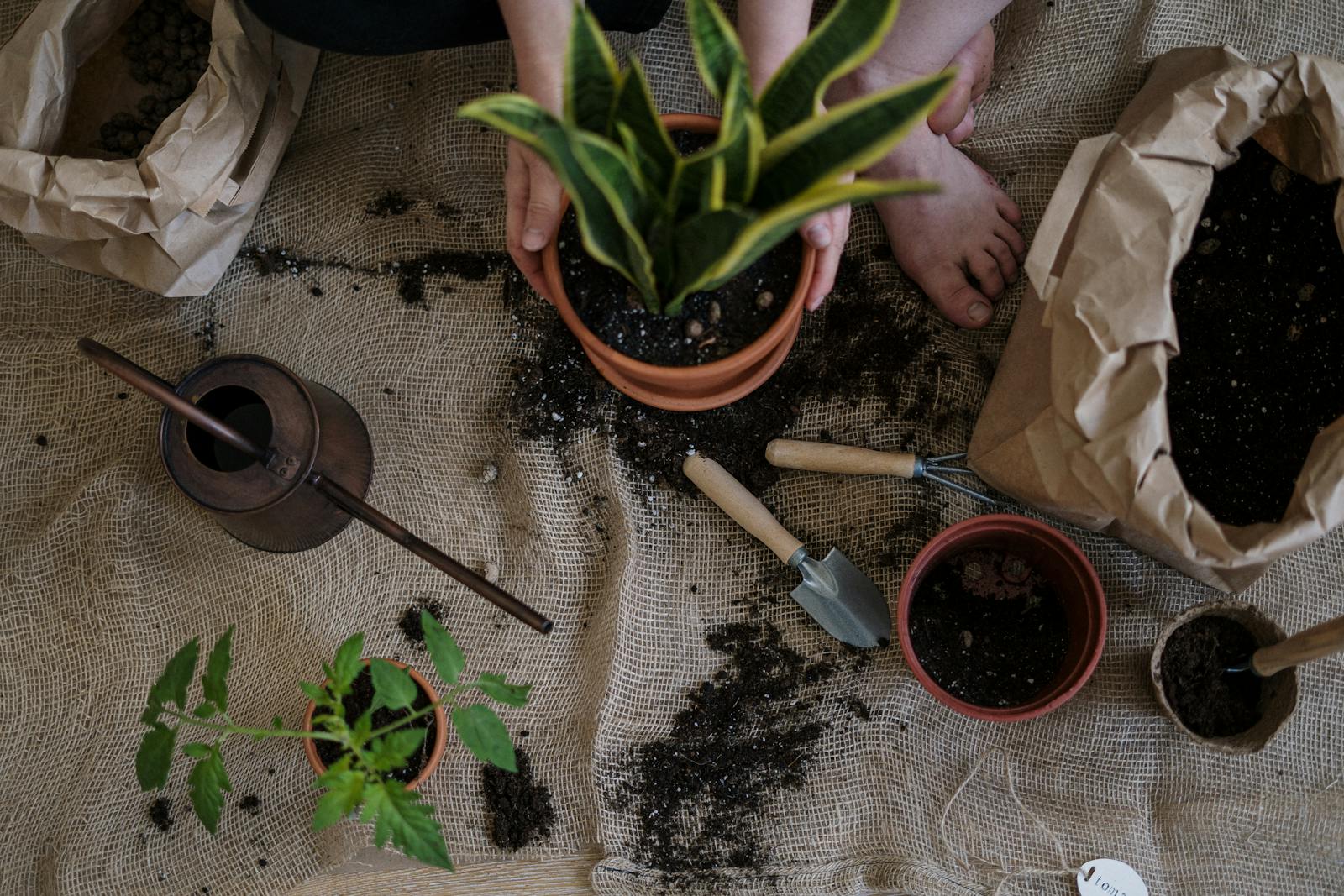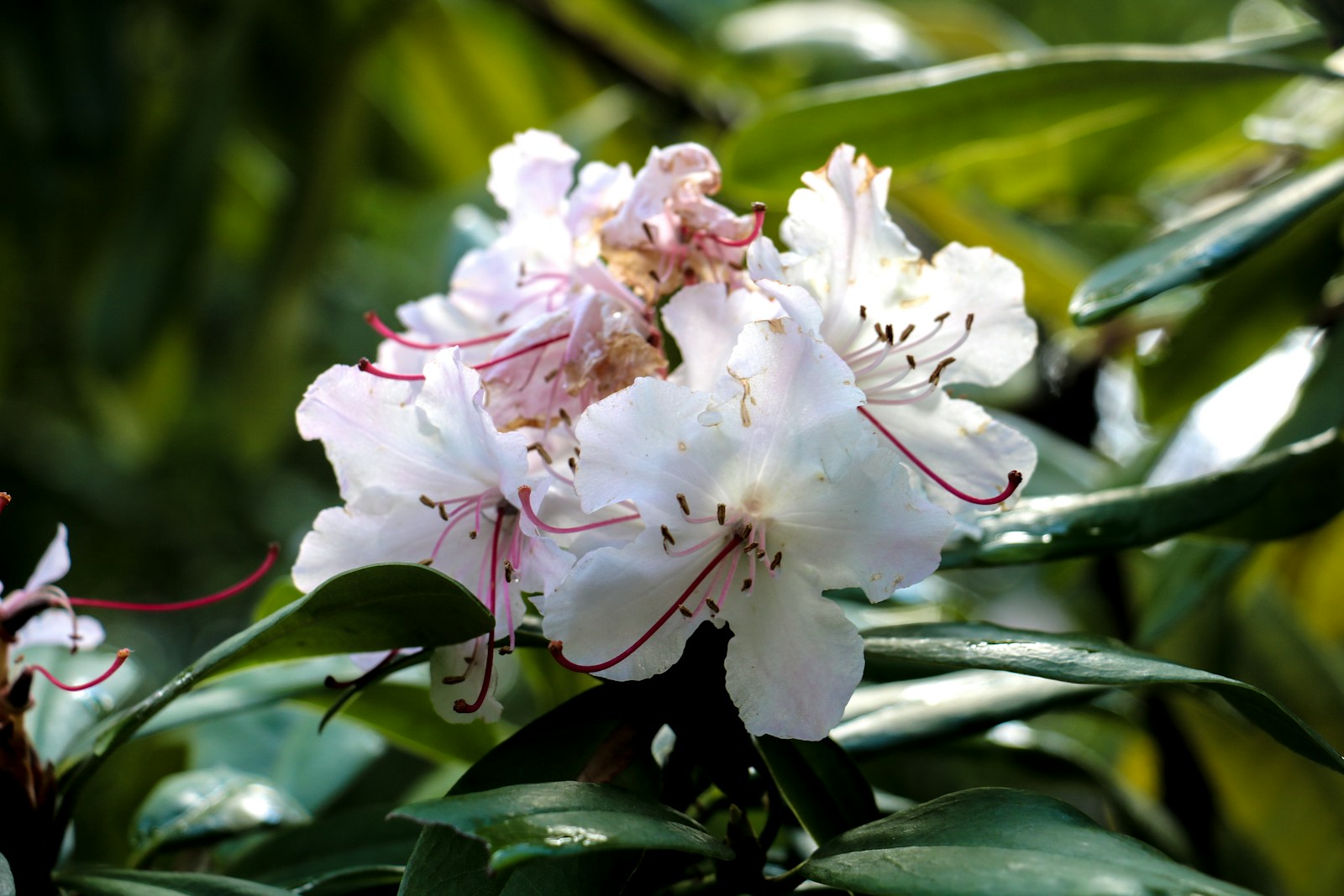Companion Planting Secrets for Bigger Harvests and Healthier Plants
What Is Companion Planting and Why It Works
Companion planting is the practice of growing different plants near one another to promote mutual benefits like pest control, nutrient enhancement, and space efficiency. Far from being a modern trend, this technique has deep roots in indigenous and traditional farming systems across the world. It creates a naturally supportive ecosystem that reduces reliance on chemical interventions.
Each plant brings something to the table. For example, legumes fix nitrogen into the soil, which benefits neighboring heavy feeders like corn. Meanwhile, strong-scented herbs such as basil or rosemary can mask the scent of vulnerable plants, confusing pests and reducing infestations.
When done thoughtfully, companion planting can transform your garden into a resilient, productive, and visually dynamic space. It’s more than just proximity—it’s about synergy.
Boosting Soil Health Through Plant Partnerships
One of the biggest hidden benefits of companion planting is its ability to improve soil quality. Certain plants, particularly legumes like peas and beans, have roots that house nitrogen-fixing bacteria. This natural process adds nitrogen to the soil, which is a vital nutrient for leafy crops like lettuce and spinach. Learn more about managing soil quality in our guide on soil control in raised garden beds.
Other plant pairings can prevent nutrient depletion. Deep-rooted plants such as carrots or parsnips draw minerals from the subsoil, making them available when they die back and decompose. Pairing these with shallow-rooted species helps maximize the vertical nutrient spectrum.
Improving soil health through companion planting leads to stronger, more productive plants. Over time, it also reduces the need for synthetic fertilizers, making your garden more sustainable and self-sufficient.
Pest Control Without Chemicals
One of the most popular benefits of companion planting is natural pest deterrence. By using the chemical signals and aromas of certain plants, gardeners can repel harmful insects while attracting beneficial ones. For instance, marigolds emit compounds that deter nematodes and aphids, making them ideal companions for tomatoes and peppers. Avoid common pitfalls in pest management by reading our article on gardening mistakes beginners make.
Similarly, planting garlic near carrots helps repel root maggots, while nasturtiums serve as a trap crop for aphids, drawing them away from more valuable vegetables. Meanwhile, attracting pollinators and predators like ladybugs and hoverflies further strengthens your garden’s defenses.
Effective companion planting reduces the need for pesticides and protects the health of your garden ecosystem. It’s a cleaner, smarter way to manage pest populations while maintaining biodiversity.
Maximizing Space and Light Efficiency
Companion planting allows you to make the most of your available space, especially in small gardens. By understanding plant growth habits, you can pair crops in ways that optimize sunlight and space usage. A classic example is the “Three Sisters” method: corn provides vertical support for beans, which in turn fix nitrogen for all, while squash sprawls along the ground to shade out weeds. Discover more techniques for efficient gardening in limited areas in our small spaces guide.
Another approach is to interplant fast-growing crops like radishes with slower-growing ones like cabbage. This ensures that the same patch of soil produces food throughout the growing cycle. Tall plants can also provide shade for delicate crops during hot summer days.
Smart space utilization through companion planting leads to greater harvests and healthier plants without requiring more land or materials.
Pairing Herbs with Vegetables for Mutually Beneficial Growth
Herbs play a powerful role in companion planting. Many aromatic herbs contain natural oils that repel pests or enhance the flavor of nearby vegetables. For example, planting basil alongside tomatoes not only deters insects but also improves the tomatoes’ taste and growth rate.
Chives and onions, when planted around carrots and lettuce, repel aphids and carrot flies. Dill attracts beneficial wasps and ladybugs, which help control pest populations. Meanwhile, mint—although best kept in containers to prevent spreading—can deter cabbage moths and flea beetles when placed nearby.
Herb-vegetable partnerships create a more balanced ecosystem in the garden. These small additions provide big payoffs, enhancing both yield and plant resilience through natural means.
Creating Trap Crops to Divert Pests
Trap cropping is a clever form of companion planting where you intentionally plant species that attract pests away from your main crops. This technique reduces damage to valuable vegetables without the need for chemicals. For example, nasturtiums can lure aphids away from tomatoes and beans, allowing these more sensitive crops to thrive.
Blue Hubbard squash can serve as a decoy for squash vine borers and cucumber beetles, drawing them away from zucchini and melons. Mustard greens are often planted near cabbage to distract flea beetles. The key is knowing the pests your garden typically faces and offering them more appealing targets nearby.
When used correctly, trap crops form a living shield around your garden. This adds an effective layer of pest control to your companion planting strategy.
Pairing Flowers with Vegetables for Pollination and Protection
Flowers are more than just pretty additions—they’re crucial allies in companion planting. Species like calendula, cosmos, and alyssum attract bees, butterflies, and hoverflies, which increase pollination and help boost fruit production. This is particularly important for crops like cucumbers, squash, and melons that rely on pollinators to set fruit.
Additionally, some flowers serve as natural pest repellents. Marigolds release compounds from their roots and foliage that repel nematodes and deter aphids. Sunflowers can act as sacrificial plants for stink bugs, drawing them away from other crops. The presence of diverse flowers also helps maintain overall ecosystem balance.
By integrating flowers into your vegetable beds, you enhance both the productivity and aesthetic of your garden while reinforcing its natural defenses.
Companion Planting for Climate Resilience
Climate variability presents a growing challenge, but companion planting can offer solutions. In hot regions, tall crops like corn or sunflowers can shade heat-sensitive plants such as lettuce or cilantro. This reduces bolting and sun damage. Conversely, cold-hardy plants can act as windbreaks or insulation for less hardy neighbors during early or late-season frosts.
Ground cover plants like clover or nasturtium help retain soil moisture in drought-prone areas. Meanwhile, dynamic accumulators such as comfrey draw nutrients from deep in the soil and make them available to surrounding plants when their leaves decompose. These strategies improve adaptability and reduce crop stress.
Using companion planting to buffer against weather extremes builds a garden that’s more stable, sustainable, and productive under unpredictable conditions.
Crop Rotation with Companion Planting Principles
Combining crop rotation with companion planting creates a dynamic system for long-term garden health. By changing plant locations annually and keeping beneficial pairings in mind, you avoid soil depletion, reduce disease buildup, and maintain pest resistance. For example, following a nitrogen-fixing crop like beans with a heavy feeder like corn optimizes soil use year-to-year.
Group plants by family—such as brassicas, nightshades, legumes—and rotate these groups through different beds each season. Within these groups, apply companion planting logic by including pest-repellent or nutrient-boosting neighbors. This layered approach enhances diversity and sustainability.
Long-term success in the garden relies on thoughtful planning. Companion planting paired with crop rotation keeps your soil and crops in peak condition across multiple seasons.
Common Mistakes in Companion Planting to Avoid
While companion planting offers many benefits, it’s not foolproof. Common mistakes include overcrowding, which leads to competition for water and nutrients, or combining incompatible plants that hinder each other’s growth. For instance, onions and beans are known to inhibit each other’s development.
Another mistake is ignoring sun and space requirements. Placing tall crops next to sun-loving low growers can lead to shading issues. Failing to plan for plant maturity timelines can also result in premature harvesting or crowding. Additionally, placing too many aromatic herbs together can confuse pollinators rather than attract them.
By researching companion relationships and planting thoughtfully, you can avoid these pitfalls and harness the full potential of your garden. Success in companion planting comes from balance, observation, and ongoing learning.
Companion Planting for Indoor and Container Gardens
Even in small spaces or urban settings, companion planting principles still apply. Container gardens can benefit from thoughtful pairings just like traditional plots. For instance, basil and tomatoes make excellent neighbors in a shared pot, supporting flavor, pest resistance, and visual appeal.
Chives and parsley grow well alongside lettuce in containers, while compact marigolds deter pests from herbs and vegetables alike. Using vertical space, you can pair trailing plants like nasturtiums with upright growers such as peppers or eggplants. Just ensure that companion plants have similar water, light, and soil needs.
Applying companion planting indoors or on balconies helps maximize yields, reduce pest issues, and create more diverse, efficient gardening setups—even without a backyard.
Boosting Biodiversity for Ecosystem Health
One of the most important outcomes of companion planting is the increased biodiversity it brings to your garden. Mixing different plant types reduces monoculture risks and encourages a range of beneficial organisms to thrive. This diversity not only supports pollination but also strengthens soil health and pest control systems.
Interplanting herbs, flowers, vegetables, and even fruiting shrubs together attracts everything from bees and butterflies to earthworms and predatory insects. The more varied your plant community, the more resilient your garden becomes against disease and climate challenges.
Fostering biodiversity through companion planting isn’t just good for your crops—it’s a meaningful contribution to local ecosystems and long-term garden sustainability.
Seasonal Strategies for Companion Planting
Effective companion planting evolves with the seasons. In spring, focus on pest-prevention pairings like onions with lettuce or radishes with spinach. Summer brings opportunities to maximize yield and space using vertical pairings such as pole beans with corn. In fall, sow nitrogen-fixing legumes alongside leafy greens for soil enrichment and late-season harvests.
Cooler months can also accommodate herbs like thyme and sage, which provide ground cover and repel pests. When planning for each season, consider crop succession and rotation strategies. Each plant group should complement—not compete with—others in terms of growth rate, root depth, and water needs.
Adapting your approach by season ensures that companion planting benefits are felt year-round, keeping your garden both productive and balanced.
Case Studies: Proven Companion Planting Pairings
Numerous time-tested pairings highlight the success of companion planting. Tomatoes and basil not only thrive together but also enhance each other’s flavor. Beans and corn, as part of the “Three Sisters” method, represent a trio that benefits from shared space, nutrients, and growth habits. Carrots and onions deter each other’s pests, making them ideal neighbors.
In flower beds, calendula planted among vegetable rows attracts pollinators while warding off unwanted insects. Nasturtiums work well near cucumbers to draw aphids away. Marigolds complement almost any crop due to their strong pest-repellent properties and bright blooms that attract helpful insects.
Using tried-and-true pairings in your companion planting plan provides a reliable foundation for success while allowing room for experimentation.
Companion Planting as a Long-Term Garden Philosophy
Companion planting is more than a seasonal strategy—it’s a holistic philosophy rooted in balance, biodiversity, and natural problem-solving. Rather than viewing plants in isolation, it encourages gardeners to think in communities. Each planting decision becomes part of a broader system designed for resilience and abundance.
When you adopt companion planting as a mindset, your garden becomes more than just a collection of crops—it transforms into a living, interdependent ecosystem. You’ll find that pests decline, yields increase, and the garden becomes easier to manage over time.
Embracing companion planting long-term leads to healthier soil, stronger plants, and a deeper connection to nature’s rhythms. It’s a practice that benefits the planet as much as the plants you grow.
Frequently Asked Questions
What is companion planting and how does it work?
Companion planting is the practice of growing different plants together to enhance growth, deter pests, and improve soil health. This technique works by leveraging natural plant relationships—some plants release chemicals or scents that repel insects, while others provide shade or structural support. For example, basil can repel pests around tomatoes, and beans add nitrogen to the soil for corn. By creating diverse plant communities, companion planting fosters a more resilient and productive garden ecosystem. It’s a natural, efficient way to boost harvests and reduce dependence on synthetic fertilizers or pesticides.
Which plants grow well together in companion planting?
Several plant pairings have been shown to thrive together. Tomatoes and basil are classic companions, improving each other’s flavor and deterring pests. Beans grow well with corn and squash in the “Three Sisters” method. Carrots and onions protect each other from root flies and aphids. Marigolds work alongside many vegetables to repel nematodes and aphids. Lettuce grows well beneath taller crops like peppers, gaining protection from sun and wind. Successful companion planting comes down to choosing combinations that complement each other in size, growth rate, and ecological function for maximum mutual benefit.
Are there plants that should not be planted together?
Yes, some plants can negatively affect each other when grown in close proximity. For instance, onions and beans are poor companions, as onions can inhibit bean growth. Tomatoes and corn both attract similar pests, such as the corn earworm, and may be best kept apart. Broccoli and strawberries can compete for nutrients, and fennel is generally incompatible with most vegetables due to its allelopathic properties. Researching known “antagonistic” pairings before planning your layout helps avoid unintentional conflicts that reduce productivity and plant health in companion planting systems.
How do I get started with companion planting?
Start by learning about your local climate, soil conditions, and crop preferences. Choose 2–3 reliable plant pairings to experiment with in your garden. Use a garden map to plan where each pairing will go based on sunlight and space needs. Rotate crops annually to prevent soil depletion and pest buildup. Begin small—try basil with tomatoes or carrots with onions. As you gain experience, expand your combinations. Track your results in a journal to refine your strategy each season. Companion planting is easy to begin and becomes more rewarding with time and observation.
Does companion planting work in container gardens?
Absolutely! Companion planting is highly effective in container gardens and small spaces. Many herbs, vegetables, and flowers can be paired in the same pot or placed close together on balconies or patios. For example, you can grow lettuce with chives or tomatoes with basil in containers. Ensure that the paired plants have similar water, light, and nutrient needs. Using vertical supports and proper spacing helps maximize efficiency. Companion planting in containers not only saves space but also enhances pest control, flavor, and garden aesthetics in compact environments.
© 2025 GardeningandDecor.com. All rights reserved.



